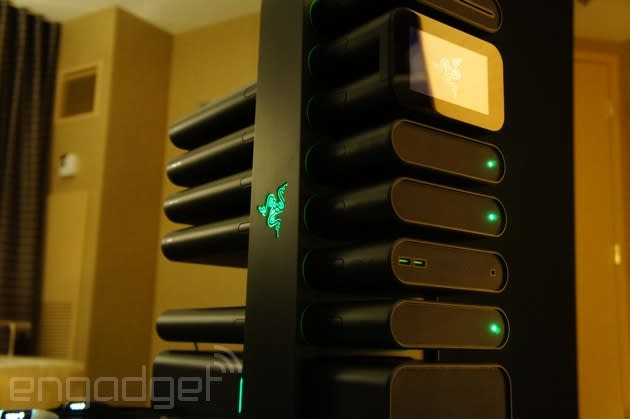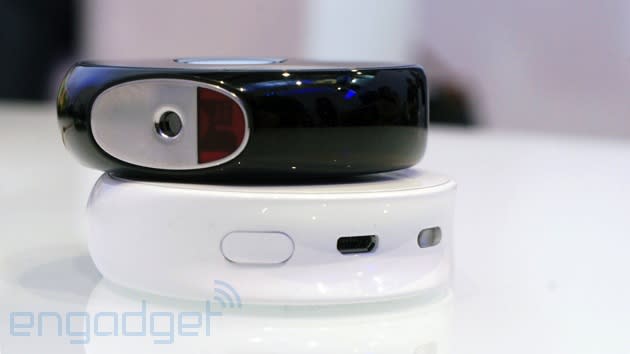CES 2014, Day 2: Five signs you're at the biggest tech show on Earth

It's easy to lose track of yourself in a city as busy as Las Vegas. Between the iconic Strip, the historic downtown casinos and the international trade shows, folks have a habit of waking up without a solid sense of location. We understand, and we're here to help. It just happens to be the second day of CES. Take a deep breath; take a careful look at your surroundings; and see if any of the following five stories sound familiar. If so, there's a good chance you've been doing the trade show shuffle at the Las Vegas Convention Center. If not, well, then you just got fed Engadget's top five stories of CES 2014, day two. Really, it's win-win.
Sony's Kaz Hirai and the recipe for a CES keynote

It's not a real trade show until industry bigwigs take the stage and run through the keynote formula. Sony CEO Kaz Hirai was certainly up to the challenge, kicking off the morning by looking back at Sony's successes and failures, chatting with Breaking Bad's Vince Gilligan and Sony Pictures' Michael Lynton about the evolution of TV and trumpeting the PlayStation 4's multimillion-unit sales figures. No keynote is complete without announcements, however, and Sony had plenty. In addition to proposing a Life Space UX projector that promises to turn your home's walls into 4K displays, Kaz revealed two new cloud services designed to stream television content and PlayStation games over the internet, finally delivering on the company's 2012 Gaikai acquisition.
Oculus goes deeper into the Rift

Palmer Luckey's virtual reality headset impressed us as a low-resolution prototype. It blew our minds again when Oculus VR upgraded it with an HD display. Now, the company has taken it a step further, building yet another prototype with an even better screen, less motion blur and positional-tracking technology. With the help of John Carmack (the mind behind PC classics like Doom, Quake and Wolfenstein 3D), the company is creating virtual experiences that are more realistic than ever. The latest headset, called the Crystal Cove Prototype, may not be representative of what a final consumer model will look like, but Oculus VR is clearly pushing the envelope in terms of virtual reality hardware.
Razer reinvents the desktop PC

Thought you knew how to build a gaming PC? Think again. Razer has traded in the desktop PC's usual configuration of motherboards, PCI-E cards and RAM chips for a tower of modular pods, each outfitted with a specific hardware component that can be swapped in and out on the fly. The strange-looking computer tower is called Project Christine, and it's Razer CEO Min-Liang Tan's attempt at making building your own computer a simpler, more user-friendly affair. To the PC gamers that habitually assemble their own rigs out of off-the-shelf parts, Christine could seem like an unnecessary stroll into a walled garden, but newbies wading into the category via Valve's Steam Machine initiative could find Razer's latest project to be an accessible alternative.
Audi unveils a sports car with laser-powered headlights

If you're thinking of picking up a high-end hybrid, you may want to take a look at Audi's CES offerings. Today the company revealed its Sport Quattro Laserlight for the first time, a hybrid electric concept car with, you guessed it, lasers headlights built in. These beams promise to shine brightly across five football fields of darkness, and their casing is nothing to laugh at either -- the vehicle boasts an impressive 700 horsepower electric and gas engine that can run 90 miles on a single gallon. It's not too hard on the eyes, either.
Scanadu's Scout tricorder is finally complete

Looking for a futuristic gadget? How about a real, functioning tricorder? The Scanadu Scout is the culmination of big dreams, massive crowdfunding and an X-prize competition to create one of Gene Roddenberry's fictional scanning devices. This isn't Spock's clunky scanner, however; it's a sleek, lightweight medical device that fits in the palm of your hand. Backers will be able to check their vitals this March, but we're just excited to see this piece of science fiction technology materialize in the real world.

